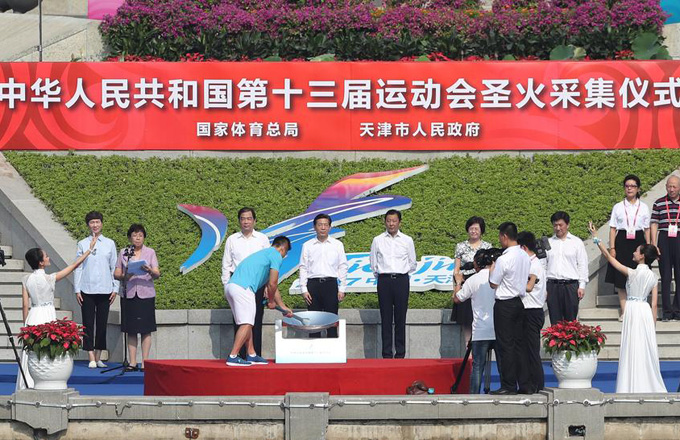Light, strong alloy may alter design of aircraft
A new kind of nano material developed by domestic researchers is expected to become the next-generation aviation material and boost the development of the country's homegrown large passenger aircraft.
The nano ceramic aluminum alloy was developed by the research team from the School of Materials Science and Engineering at Shanghai Jiao Tong University.
Light in weight, such new material has the characteristics of high rigidity, high strength, fatigue resistance, low expansion and high temperature resistance.
Instead of the traditional physical method of mixing the ceramic and aluminum alloy, researchers put the nano ceramic particles into aluminum alloy through an innovative chemical process. During the process, the size, shape, and distribution of the particles were controlled.
This helped improve the rigidity and strength of the new material. At the same time, the processing and manufacturing performance of aluminum alloy remains, said Professor Wang Haowei, who led the project.
"The nano ceramic aluminum alloy material helps break the bottleneck of large-scale application in engineering," Wang said.
The university's scientists started the basic research in the field in the early 1990s, Wang said, and they have made a lot of experiments in developing the new material over the years.
"Compared with titanium alloy and high-temperature alloy, the performance of aluminum alloy with 3D printing technology is much lower. The 3D printing components made of nano ceramic aluminum alloy can achieve the performance of forgings," Wang said.
So far, the new material has already been used in the Tiangong-1 and Tiangong-2 space labs, quantum satellites and meteorological satellites. It also has been used in key components of automotive internal-combustion engines, which not only reduces weight efficiency, but also saves energy, reduces emissions and improves safety.
Wang said researchers are stepping up their cooperation with Commercial Aircraft Corp of China to promote the use of such new materials in large aircraft.
"The advances in aviation development are closely connected to the progress of materials, and we are closely watching the development and performance of the new material," said Wu Guanghui, vice-president of COMAC, the general designer of C919, the first homegrown large passenger aircraft
Wu said the nano ceramic aluminum alloy material is still being tested, and is expected to be used in the C919 aircraft, replacing some of current components, which were imported.
A new material innovation center was established at the university last week, which aims to further boost the industrialization of the nano ceramic aluminum alloy material. Based on Wang's research team, the center was jointly established by the Huaibei government of Anhui province, Shanghai Jiao Tong University, Shanghai JuneYao Group and Anhui Xiangbang Composite Material Co.
In 2013, the Huaibei government established a midterm test and manufacturing base with an annual production capacity of more than 1,000 metric tons, and it also founded the Anhui Xiangbang Composite Material Co. The production of such material aims to meet large-scale applications in aerospace, aviation and auto industries.





















